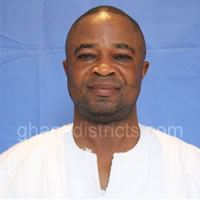Literacy and Education
Education and literacy are two sides of the same coin and are important tools for national development. An educated and literate person would be able to use the acquired skills and thus make informed decisions which would allow for increase opportunities and effective competition with others. Therefore, investing in human resource development through formal education has caught the attention of all governments since independence.
Literacy
Literacy is measured by the ability to read and write a simple statement in any language with understanding. It also enables people to access information on what goes on around them so as to make informed decisions. (GSS, 2013).
Table 3.9 shows that of the persons 11 years and older in the District, 75.5 percent are literate with the remainder being non-literate (24.5%). In terms of sex, the Table indicates that males constitute the majority (55.9%) of the literate population. However, in terms of illiteracy, females are in the majority with 69.5 percent.
Education
Education is one of the critical pillars for human capital development; an important factor in the development of a country. Because of its importance, it features prominently in the Millennium Development Goals and indeed the achievement of several other development goals largely depends on education. Indeed, it is widely accepted that education can increase the mental and productive capacities of individuals.
Figure 3.2 indicates population 3 years and older who are currently attending school, had attended school in the past or had never attended school. There are more females (28.0%) who had never attended school than males (14.0%). The proportion who had attended school in the past is 45.2 percent for males is greater than that for females (34.7%). The proportion of currently attending school is also a little higher for males (40.0%) than for females (34.7%).
Level of education and school attendance
Table 3.9 shows the Population three (3) years and older by level of education, school attendance and sex in Mpohor District. The total population of persons three (3) years and older in Mpohor District is 30,851 of which currently attending school in Mpohor District is 15,230 consisting 52.4 percent males 47.6 percent females. The Table further shows that, those who are in primary schools account for 48.8 percent; JHS/JSS (17.6%); SSS/SHS (5.4%) and; Tertiary students (1.0%).
Date Created : 11/20/2017 7:08:01 AM





 facebook
facebook twitter
twitter Youtube
Youtube TOLL FREE 0800 430 430
TOLL FREE 0800 430 430 +233 593 831 280
+233 593 831 280 GPS: GE-231-4383
GPS: GE-231-4383 info@ghanadistricts.com
info@ghanadistricts.com Box GP1044, Accra, Ghana
Box GP1044, Accra, Ghana